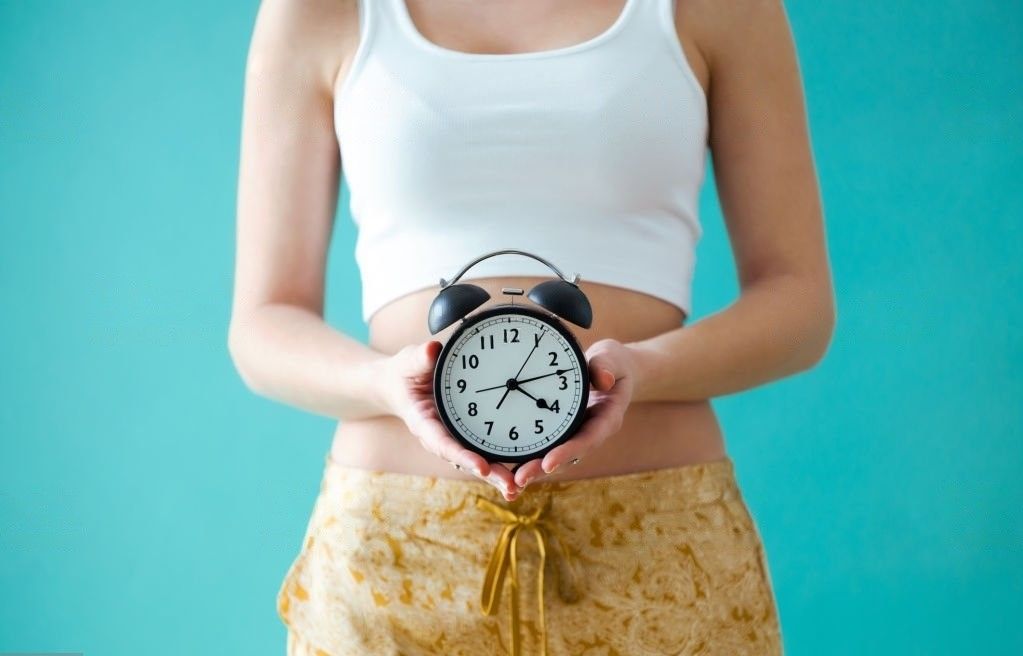Follicular Phase In Menstrual Cycle - What Does It Mean ?
The follicular phase of the menstrual cycle is a key stage in which ovarian follicles grow and develop under the influence of FSH and estrogen.

The menstrual cycle is a complex and fascinating process that occurs in women's bodies, preparing them for potential pregnancy each month. One of the key phases of the menstrual cycle is the follicular phase, during which the body undergoes several hormonal changes and prepares for ovulation. In this blog, we will delve into the scientific details of the follicular phase, exploring its significance, key mechanisms, and supporting research.
The Follicular Phase: An Overview
The follicular phase is initiated by the release of follicle-stimulating hormone (FSH) from the pituitary gland. FSH stimulates the growth and development of multiple follicles in the ovaries. Within these follicles, immature eggs (oocytes) begin to mature, and each follicle produces estrogen. Estrogen plays a crucial role in the follicular phase by stimulating the thickening of the uterine lining (endometrium) and preparing it for potential implantation.
Impacts of the Follicular Phase
- Menstruation: The follicular phase begins on the first day of menstruation. The shedding of the uterine lining can cause symptoms such as cramps, bloating, and mood changes.
- Hormonal Changes: During the follicular phase, levels of follicle-stimulating hormone (FSH) increase. This hormone stimulates the growth of several ovarian follicles, each containing an egg.
- Development of Dominant Follicle: As FSH levels rise, one follicle becomes dominant and continues to grow, while the others stop growing and are reabsorbed by the body. The dominant follicle releases increasing amounts of estrogen.
- Endometrial Lining Growth: The rising estrogen levels stimulate the growth of the endometrial lining of the uterus, preparing it for potential implantation of a fertilized egg.
- Cervical Mucus Changes: The cervical mucus becomes thinner and more slippery closer to ovulation, which helps facilitate the passage of sperm through the cervix.
- Mood and Energy Fluctuations: Some women report feeling more energetic and emotionally stable during the follicular phase, possibly due to rising estrogen levels.
- Increased Libido: Some women might experience an increase in their sex drive as they approach ovulation due to increasing estrogen levels.
- Ovulation: The follicular phase ends with a surge in luteinizing hormone (LH), which triggers the dominant follicle to release an egg during ovulation.
- Fertility Window: The end of the follicular phase and the start of ovulation mark the most fertile window in a woman's cycle.
SUMMARY
The follicular phase of the menstrual cycle is a critical stage characterized by the growth and development of ovarian follicles under the influence of FSH and estrogen. This phase prepares the body for ovulation, with the dominant follicle eventually releasing a mature egg. Estrogen plays a crucial role in thickening the endometrium and creating an optimal environment for potential implantation. Scientific studies provide evidence for the hormonal regulation, dominant follicle development, and the influence of estrogen on the endometrium during the follicular phase.
Jayti Shah is a Clinical Nutritionist with a master's degree in Clinical Nutrition and Dietetics. She is a member of the Indian Dietetic Association (IDA). Over the last 9 years, she has helped 400 clients in their clinical and weight loss journeys. She works with SocialBoat as a nutrition consultant.
At SocialBoat, we offer custom diet plans and guided workouts to help you achieve your goals in a 360-degree approach. Our gamified experience ensures that you don’t find workouts boring and we reward you for being consistent with your efforts.

REFERENCES
- Huddleston HG, Cedars MI, Sohn SH, et al. Racial and ethnic disparities in reproductive endocrinology and infertility. Am J Obstet Gynecol. 2010;202(5):413-419. doi:10.1016/j.ajog.2009.06.057
- Chatterton RT Jr, Mateo ET, Hou N, Rademaker AW, Acharya S, Jordan VC, Morrow M. Characteristics of salivary profiles of oestradiol and progesterone in premenopausal women. J Endocrinol. 2005;186(1):77-84.
- Pluchino N, Ninni F, Villa P, etal. Effect of oral contraceptives on the endometrium: A review. Contraception. 2017;95(4):328-339. doi:10.1016/j.contraception.2016.10.015
- Albertson BD, Loveland JB, Shim JJ, et al. Serum hormone levels predict the size and number of follicles in the undamaged ovary of older women. Fertil Steril. 2015;104(3):698-705.e1. doi:10.1016/j.fertnstert.2015.05.009
- Briton-Jones CM, Yovich JL. Relationship between follicle development, oocyte retrieval and pregnancy rate after in-vitro fertilization: Predictive value of serum estradiol concentrations on the day of human chorionic gonadotropin. Hum Reprod. 1995;10(1):242-247.
- Lessey BA. Assessment of endometrial receptivity. Fertil Steril. 2011;96(3):522-529. doi:10.1016/j.fertnstert.2011.07.1095
- Mínguez-Alarcón L, Gaskins AJ, Chiu YH, et al. Type of underwear worn and markers of testicular function among men attending a fertility center. Hum Reprod. 2018;33(9):1749-1756. doi:10.1093/humrep/dey259
- Souter I, Baltagi LM, Kuleta D, Meeker JD, Petrozza JC. Women, weight, and fertility: the effect of body mass index on the outcome of superovulation/intrauterine insemination cycles. Fertil Steril. 2011;95(3):1042-1047. doi:10.1016/j.fertnstert.2010.10.042
- Buck Louis GM, Sundaram R, Schisterman EF, et al. Semen quality and time to pregnancy: the Longitudinal Investigation of Fertility and the Environment Study. Fertil Steril. 2014;101(2):453-462. doi:10.1016/j.fertnstert.2013.10.049
- Haahr T, Esteves SC, Humaidan P. Individualized versus conventional ovarian stimulation for in vitro fertilization: a systematic review and meta-analysis. Fertil Steril. 2017;107(4): 707-714. doi:10.1016/j.fertnstert.2017.01.022
